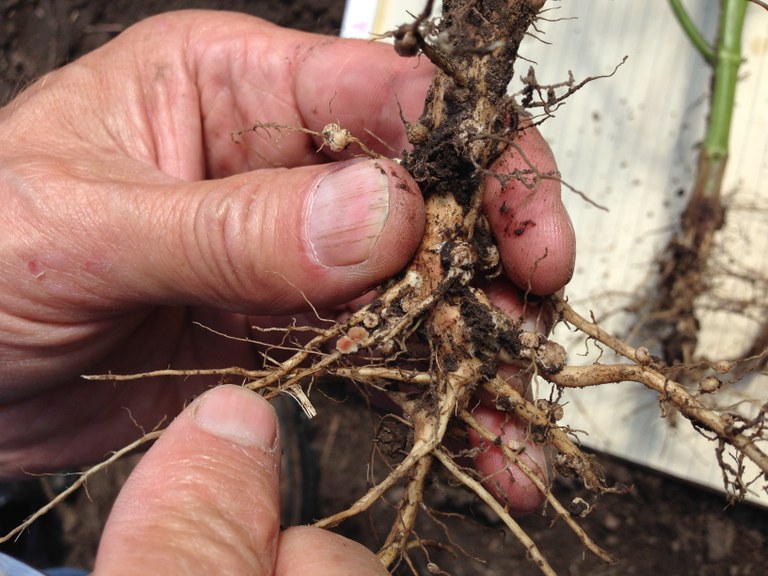Seed Inoculation Strategies on Fields with Prior Soybean Production
Double inoculation of soybean seed is defined as use of a liquid plus granular formulation of N-fixing bacteria (Bradyrhizobium japonicum) with the seed at planting. Double inoculation is a common practice for soybean grown on fields without prior history of soybean production. Six trials were conducted by the CREC during 2015-2018 to examine potential soybean yield response to single versus double seed inoculation on ground with recent soybean production. The trials were partially supported by the North Dakota Soybean Council.
The trials were conducted at Carrington and the CREC off-station crop research site near Wishek. Trial locations were on ground with one to three years separating soybean crops. Seed inoculant treatments (various commercial sources used at labeled rates) included: 1) non-inoculated check; 2) liquid applied with seed; 3) granular applied in-furrow; and 4) liquid plus granular.

The table shows soybean seed yield results for each trial and the average across the six site-years. Statistically for each trial, yield was similar among inoculant treatments including the non-inoculated check. Averaged across trials, yield also was statistically similar among all treatments, though double inoculation tended to have slightly higher yield versus no or single inoculation. In addition, seed protein averaged across site-years (data not shown) was similar among inoculation treatments and the untreated check.
In summary, this research indicates no seed yield or protein advantage using double- versus single-seed inoculation on ground with recent prior soybean production history.
Greg Endres
Gregory.Endres@ndsu.edu
Extension Agronomist
Additional contributors: Mike Ostlie and Tim Indergaard


